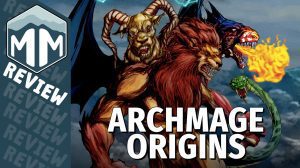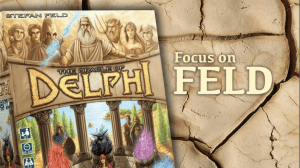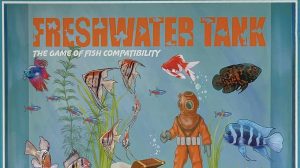Old News?
It’s taken a long time to get here, but the inner chamber has finally been located. In just a few moments, the walls will be breached and the mysteries hidden within will be revealed. The explorers hold their breath as the final barricade is removed. The beams of their flashlights play weakly across the floor, their powerful light reduced to a faint glow as the darkness swallows it up like a grubby child in a chocolate factory.
And then their hopes are dashed. Useless garbage litters the floor, evidence of treasure hunters from long ago having stood in this very spot, taking anything worthwhile and leaving the rest behind. This chamber has been picked clean.
Or maybe not.
There, in the corner, a small box laying on its side, covered in a thick layer of dust. Carefully, the intrepid explorers blow off the dust and set the box back upright. Then, lifting the lid, they excitedly peer inside.

What they find is a jumble of documents, the paper crumbling from age in some parts. It’s a mess. Nothing’s in order and it’s going to take a long time to sort out. But both of these explorers know that the accolades and celebrity that will inevitably ensue are worth the effort. And they both want that spotlight for themselves.
So, rolling up their sleeves, they start…
Getting to Work.
In this game, the players are explorers competing with their contemporary to piece together the most documents for the greatest acclaim. Fame requires sacrifice and they’re not above destroying ancient knowledge to get themselves some of that acclaim. Academia can be cutthroat and competitive, and that’s never been more abundantly clear than this moment.
The documents, represented by domino-like tiles, are arranged haphazardly in a box. Each tile contains two pieces of information. On one end of the tile is an icon indicating which document the tile is a part of. The other end features a number indicating where in that document the tile belongs. The goal of the game is to obtain as many runs of numbers in the four suits as possible. The longer the runs, the more points they’re worth at the end of the game.

A player’s first option on their turn is to simply take one of the face up tiles and add it to their personal collection of tiles, but they can only claim tiles that are fully visible (both ends of the tile can be seen). Each player is provided with a small excavation tool to assist them with retrieving tiles that are deeper in the box.
In addition to the 40 basic tiles, the game also includes 8 “God tiles” that can be used as substitutes for the 9s and 10s of each suit. Instead of the usual icon and number pairing, each of these tiles features two different icons, and there are two copies of each tile. Possessing one half of a pair at the end of the game will score that player a point, but owning both halves will score five points.
The second option is to use one of the cards they will be holding in their hand to manipulate the collection of tiles in some way. There are six of these cards and they are divided into three types: Explorer, Excavator, and Expert. These cards allow you to slide tiles around, remove tiles from the game, and collect extra tiles the players normally wouldn’t be able to. Once a player has used one of their cards, it’s removed from the game.

The game also comes with upgraded versions of each of these cards that provide a more advanced experience. These can be used to replace the basic cards wholecloth or as 1:1 substitutes. Regardless of how the players choose to mix and match their cards, it’s important that each player begins the game with the same set of six cards as the other player.
Once every last tile has been claimed or removed from the box, it’s time for the players to tally up their final scores and collect those…
Accolades.
Each run of tiles will score a player a varying number of points, determined by the size of the run. A single tile scores 0 points. A run of two scores 2. A run of three scores 4. This inflation of points continues as the runs get larger eventually culminating in a run of six or more netting the player 14 points.

When the dust settles, the explorer who’s done the best job of collecting and reconstructing their ancient documents will win the game. Presumably, this will be followed up with a well-reasoned and researched document of their own in which they dig into the contents of the documents they’ve recovered and share their…
Thoughts.
Once upon a time, I had nothing but time. My life outside of my day-to-day work was largely mine with which to do whatever I pleased. And, it pleased me greatly to spend much of that time sitting at a table with my wife, a board game spread out before us.
Then we became parents.
Parenthood, for all the joy it brings, comes with costs. There’s the obvious financial cost involved. Kids aren’t free. They require things like food, clothing, Spiderman costumes, and Pokemon plushies. You know, the necessities. There’s also a social cost. Some places you used to haunt aren’t welcoming to children. Not every friend is comfortable around small babies. Your game group is loud and boisterous and not very conducive to your child getting a good night’s rest. The bar you used to frequent inexplicably refuses to serve alcohol to toddlers. And then there’s the cost measured in seconds, minutes, and hours. That free time you used to enjoy becomes a thing of the past.
Needless to say, it can be hard getting a game to the table.
Parenthood changes a lot of things. In my particular case, it forced me to change my gaming interests. Where I used to mainly favor hours’ long heavy euros, I found myself itching for smaller, faster fare: games that could be played quickly, games with smaller footprints, games that could potentially hit the table more often given the limitations placed upon me. Games like Tanis.
Tanis is perfect for my needs. It’s small in size, coming in just under the size of a standard hardback novel (height, width, and girth). It plays very quickly. A typical game only takes 20 minutes or so. And, more importantly, it’s thought-provoking and fun. In Tanis, Phil Walker-Harding manages to find that balance between pacing and complexity. The game moves along quickly enough that it doesn’t overstay its welcome. Tanis has a lot of interesting decision points, forcing its players to choose between helping themselves, hindering their opponent, or setting themselves up for future moves (or, if they’re savvy enough, a little bit of each).
Tanis is a game that rewards skillful play, but not necessarily repeated ones. Each iteration of the game presents its own challenges, so newcomers are evenly matched when going up against more experienced players. You don’t have to have played thousands of hours of Tanis in order to do well. It is for these reasons that I have no qualms about recommending this game.
Phil-Walker Harding (Sushi Go, Imhotep, Gizmos) is a well-respected designer here at Meeple Mountain. Collectively, we’ve reviewed 14 games from the Phil Walker-Harding collection (at the time of this writing). But, as well-respected as he may be, not all of his efforts have landed well. Thomas took issue with various aspects of Cloud City. While he could appreciate the look and feel of the game, it left him feeling uninspired. I was similarly unimpressed by Museum Suspects.
Game design can be like that. Not every game will be a hit with everyone. Some games are just stinkers, and it’s anybody’s guess as to how they ever saw the light of day to begin with. It’s a lot like writing reviews in that regard. One review may land and get shared around with a wide audience, striking a chord with the populace (whether good or bad). While another review seems to get no traction at all.
Playing games like this one, where I’m sifting through the remnants of some long-forgotten civilization, often sends me down a road of self-reflection. What kind of legacy am I leaving behind? Am I wasting my time writing these reviews? Is anyone actually reading them? If so, are my thoughts and feelings regarding the things I write about valued? Or do people only read reviews to find validation for their own opinions? Will the things I’ve written withstand the test of time? Or, will they just be relegated to some archive somewhere, hidden from view, just more of yesterday’s…










